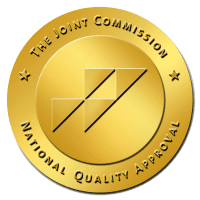Getting Help for Cannabis Use Disorders at Purpose
Contrary to popular opinion, it is possible to become addicted to cannabis use. Data even suggests that as many as one in three people who try the product develop some form of marijuana dependence. If you or someone you know has formed this kind of addiction, you may want to learn what getting free looks like.
This article will help you by delving into what the marijuana detox process entails, letting you comprehend the whole journey. As you read on, try to understand that getting clean is only one step of the journey, and people sometimes need all the help they can get. So, stick around to learn how.
An Introduction to Marijuana Detox
If you do not know what this term is, it refers to the process of removing cannabis-related chemicals from the body. Usually, it occurs after prolonged use and is intended to bring a person back to as close to “normality” as they can get.
This often marks the beginning of a journey toward overcoming marijuana dependence. It does this by readjusting an addict’s body to function without the substance and then allowing them to make sober decisions.
This process often occurs within a dedicated, professional facility. This offers someone the greatest chance of recovery lasting due to its focus on the healing process.
The First Step: Recognizing Marijuana Dependence
While marijuana is not as addictive as many of the other recreational substances that people use, It is still dangerous. This is due not only to its bodily effects in high quantities but also its mental health impact.
This is why trying to detox when quitting weed use can be difficult, but the first step someone needs to take towards it is recognizing that they are addicted.
Physical Symptoms
Some of the more common signs of drug use that someone might experience when on weed include the following. Note that this list is non-exhaustive:
- Bloodshot eyes
- Dry mouth
- Increased pupil size
Some of these also overlap with the use of other drugs or specific medications. As such, it may be sensible to ensure they are not the only signs you are basing your diagnosis on.
Behavioral Symptoms
Marijuana addiction often involves a compulsion to use cannabis despite the negative effects it might have had on a person’s life. It can lead a person to start:
- Neglecting their responsibilities
- Withdrawing from social activities
- Suffering mental health issues
- Prioritizing buying weed over necessities
- Experiencing memory loss or difficulty concentrating
Once someone recognizes these signs, they may want to seek out professional help to ensure they have the best chance of avoiding them in the future.
Recognizing the Need for Detox
It can be hard to even want to try facing an addiction to a substance like marijuana. The whole process can involve a lot of issues, such as:
- Increased stress
- Facing environmental triggers
- Managing cravings
- Impacted mental health
- Sleep problems
- Weight fluctuations
At the same time, many of these issues come while using cannabis, and not only during withdrawal. Thus, it can be beneficial to try to get rid of them entirely.
The Stages of Marijuana Withdrawal
When someone uses cannabis for a long time, their body adapts to the existence of cannabinoids and other chemicals in its system. When they start the detox process, though, their body will start to filter these out without replacing them with more.
This will cause someone’s body to undergo several stages. While these are not cut-and-dry steps, and everybody’s journey is different, it is useful to understand what to expect. This can help someone to mentally prepare for some of the least enjoyable stages.
Early Stages
Within a day of last using the substance, anyone in detox will start to experience their first marijuana withdrawal symptoms. These usually involve a dramatic upswing in cravings for the substance.
When someone’s body communicates to them that it needs something, it can cause them to get very irritable. They may develop dramatic mood swings or even lash out at those who frustrate them.
A person is also likely to feel physical discomfort in the form of headaches or even stomach aches. They may feel nauseous or even vomit if the experience is strong enough.
These experiences hammer home why having trained professionals in the vicinity can be beneficial. They can support the person through their early stages of discomfort, offering support when necessary. Due to prior experience helping people in a similar situation, they can ensure they know how to assist no matter what this stage brings.
Intermediate Stages
As their cravings intensify, a person is likely to face disrupted sleep. Often, their digestive system will continue to have issues, too, as well as headaches and other bodily pains.
Together, these feelings can offer a great deal of physical discomfort, which is why having a way to distract oneself or deal with the pain is useful. Developing coping mechanisms is vital to ensure people can move forward into the next stage of their recovery.
A facility that offers ongoing support and counseling, such as the Purpose Healing Center, can help. It allows someone to continue their treatment and move forward by giving them the assistance they need when things are their hardest.
Long-Term Effects
Some people who have used cannabis for a long period may experience extended withdrawal symptoms. While their intensity may abate from the more intermediate stages, they can take longer to disappear completely.
There is also plenty of evidence to suggest that extensive use of marijuana can have a significant impact on one’s mental health. As such, someone may face periods of anxiety or depression, or mood swings continue for a longer time after they stop using the drug.
There are ways to mitigate these long-term effects, such as embracing a healthy lifestyle and engaging in ongoing support. Locations such as the Purpose Healing Center can help people who suffer from this effect, allowing them to return to a normal life as before.
The Role of Medical Supervision
When spending time in a rehab facility, a patient will receive ongoing care and attention. The period in which someone starts to become more sober and regains lucidity can be a difficult time. It can even be fraught with depression, which is why people are there at all times to ensure patients have the support they need.
Depending on the individual, those going through withdrawal may be able to receive medical help to ease any discomfort they feel. This will be on a case-by-case basis, with the intent of ensuring nobody exacerbates their situation.
At the same time, those looking after inpatients will be available to offer guidance. This support is available throughout the detox process. While dedicated therapy will occur in rehab, all staff also have the training to offer help when necessary.
Going Beyond Simple Detox
Drug addiction treatment does not work in the same way for every sufferer. For this reason, rehab centers have many tools for addiction treatment. Staff will attempt to match the best form of drug rehabilitation with each inpatient to work out what works best for them.
Some of the most effective tools of help that you may find in professional rehab centers might include:
- Root cause analysis
- Family and peer therapy
- Community support groups
- Cognitive behavioral therapy
- Substance abuse education
- Relapse prevention training
- Matrix model treatment
- Mindfulness and meditation
- Exercise and yoga
- Motivational reinforcement programs
- Well-trained staff and other support
For a detailed explanation of what each of these are and how each location implements them in their program, contact your local rehab center. They will be able to explain their specific process and how they integrate each tool into their holistic approach to treatment.
Post-Rehab Outpatient Programs
After someone finishes inpatient therapy, their journey is not over. Continued support is imperative to ensure people do not relapse and start to use marijuana again in the future.
Also, it is important to remember that mistakes do occur. If they do, patients need to know that help is still available. It can be a period of significant shame, pushing people back into habits they may have given up months or even years ago.
By continuing to provide post-rehab support, you can ensure they will have tools available so they can return to sobriety once more.
Some of these include:
- Individual Therapy
- Group Counselling
- Psychoeducational Programming
- Medication Management
Each of these offers different forms of help, either from an individual or a supportive group. They can help people normalize the difficulties a patient faces, ensuring any shame they feel does not overwhelm them. The patient can then continue trying to improve their habits, with the aim of staying sober in the future.
Your First Steps Towards Marijuana Detox
Remember that the road to recovery is personal, and there is no single path. Here at Purpose Healing Center, we understand this. As such, we remain committed to supporting you or your loved one in their healing process.
With a highly-trained team of care staff and custom healthcare programs, we can help guide you through marijuana detox. Long-lasting recovery is within your grasp; you only need to reach out and take it.



